May 26, 2025 | 16:50 GMT +7
May 26, 2025 | 16:50 GMT +7
Hotline: 0913.378.918
May 26, 2025 | 16:50 GMT +7
Hotline: 0913.378.918
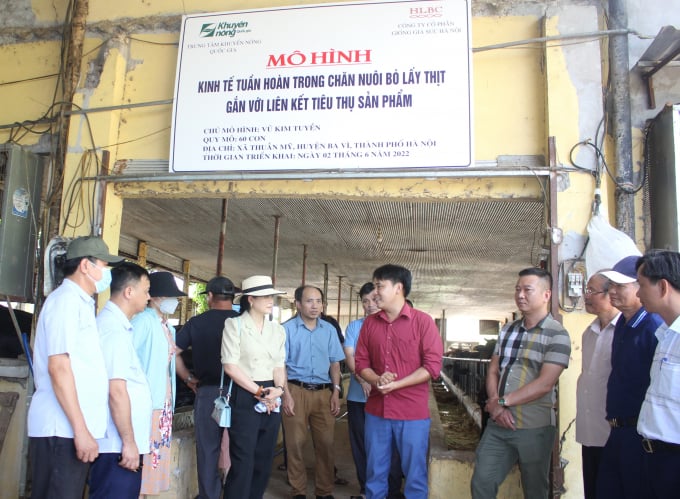
The delegation of the Agricultural Extension Forum @ Agriculture visited the circular economy model in beef raising on Vu Kim Tuyen's farm in village 6, Thuan My commune, Ba Vi, Hanoi. Photo: Trung Quan.
The National Centre for Agricultural Extension on June 28 in collaboration with the Hanoi Department of Agriculture and Rural Development held the Agricultural Extension Forum @ Agriculture themed "Solutions to develop beef production value chain".
Ha Thuy Hanh, Deputy Director of the National Centre for Agricultural Extension said that the forum was an opportunity for state management agencies, scientists, businesses, and livestock farmers to assess the situation, raise difficulties, share experiences and propose solutions to develop beef production along the product value chain. It would help farmers strengthen their knowledge and skills in creating safe and quality products and increasing income, competitiveness, and protecting the ecological environment.
According to Hanh, Vietnam was a country with strengths in livestock development. The growth rate of the livestock sector maintains an average of 5-6 per cent per year, meeting the domestic and export demand. The whole country's cow herd by the end of the first quarter of 2022 was estimated to increase by 1.1 per cent, the output of live meat was estimated at 128,000 tonnes, up 3.4 per cent over the same period in 2021.
Vietnam's beef products have many opportunities and advantages to develop strongly in the coming time thanks to large consumption market while until now, 60 per cent of beef consumed in Vietnam are imported.
Currently, many large enterprises applied chains of importing - slaughtering - processing - distributing. In the future, these can be considered as the locomotives promoting the development of beef production chain. Besides, the Government and partner countries have support policies in the strategy of beef production development.Vietnam also aims to promote the development of grass-fed cattle, especially beef cattle, so that by 2030, it will reach over 10 per cent of the total beef production of all kinds (currently 7.4 per cent).
However, Hanh said that besides the advantages, the development of beef production chain in Vietnam still faces many difficulties and challenges. For example, Vietnamese beef faces the risk of competition with imports that have lower production costs. In addition, Vietnam has allowed the import of live cows from Australia, Brazil and Thailand for domestic slaughter.
At the same time, as Vietnam signed the Free Trade Agreement with EU countries, the Comprehensive and Progressive Agreement for Trans-Pacific Partnership - CPTPP with Australia, Canada, Mexico, and New Zealand, the import tax rate of this item will be decrease to zero per cent.The Deputy Director of the National Center for Agricultural Extension said that building a chain of production and consumption of safe livestock products was a mandatory requirement and was considered the key to help farmers increase profits and develop sustainable development.
On that basis, at the forum, the delegates actively discussed issues related to nursing techniques, self-produce and mix feed to reduce input costs, policies and solutions to develop beef production along the product value chain to improve production value, economic efficiency, meet the increasing requirements of the market, increase competitiveness, and protect the environment.
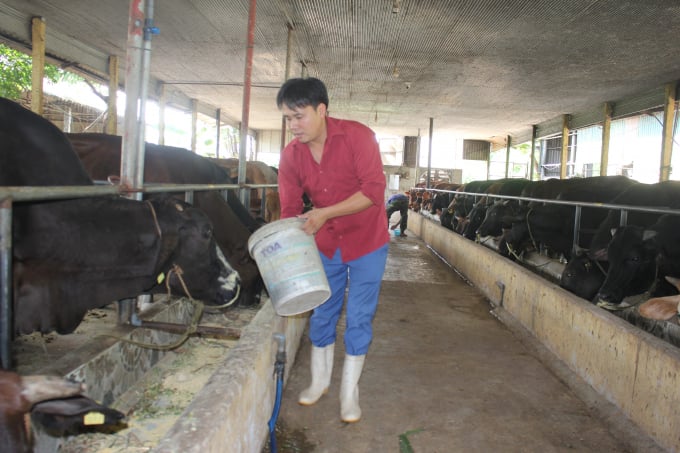
Building a chain of links in the production and consumption of safe livestock products is a mandatory requirement and is considered the key to helping farmers increase profits and develop sustainably. Photo: Trung Quan.
Within the framework of the forum, delegates visited the beef cattle farming model associated with product consumption links at village 6, Thuan My commune, Ba Vi district (Hanoi).Local farmer Vu Kim Tuyen shared that since 2014, his family started to associate with Hanoi Cattle Breeding Joint Stock Company to raise 3B cows for meat. From the five cows, up to now, the total herd of 3B cows in his family has increased to 170 cows.
According to Tuyen, the biggest benefit when raising cows following the product value chain was that farmers feel secure, confident, and earn higher profits than spontaneous farming. When he joined the chain, he was provided with quality seed by the company and guided in technical care. As a result, cows grow and develop well, with high resistance, weight and meat quality are improved compared to traditional farming.
In addition, the company also provides technical guidance on mixing and incubating nutrient-rich foods; using biological products to treat manure and wastewater as fertiliser for grass, corn, etc. SUch techniques help to reduce odors and rot, protect the environment and save a lot of input costs, especially in the context of the current high price of animal feed.
Tuyen was also supported to connect to the establishments that buy, slaughter, and consume cows. Therefore, the output is always kept stable. The selling price is at a high level of VND90,000-95,000 per kg (higher than the market price of VND85,000-86,000 per kg). After deducting expenses, he earns VND8-12 million per cow.
Hanh, the official from the National Center for Agricultural Extension, assessed that when developing livestock production chain, people would be proactive in breeding, nutritious food, and equipped with knowledge and techniques of biosafety farming and vaccines.
Farmers also have a stable output and high selling price.Hanh said that in the coming time, the National Center for Agricultural Extension would continue to implement activities promoting industrialisation, modernisation, sustainable development and improving the competitiveness of the livestock industry.
By 2030, Vietnam's livestock production will be in the group of advanced countries in the region.
Livestock products will be mainly produced in professional farms and households, ensuring biosecurity, disease safety, environmental friendliness, humane treatment of livestock, meeting the requirements of animal husbandry demand for quality and food safety for domestic consumption and exports.
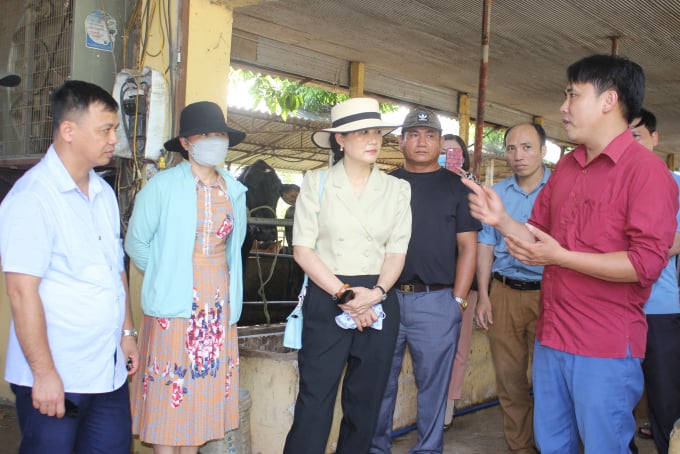
In the coming time, the National Center for Agricultural Extension will continue to build models and provide training on VietGAHP livestock production, biosecurity, disease safety, biosecurity, organic orientation and linkage. Photo: Trung Quan.
Priority is to be given to building synchronous closed models of farm husbandry from the transfer of technical advances in breed, caring, slaughtering, processing, consumption of livestock products, and environmental management.
Other priorities are to build ecological and circular agriculture models, linking cultivation with livestock, using crop products as animal feed, and effectively using livestock waste as organic fertiliser.
Livestock production models are developed to fit the conditions in border, island, and remote areas, creating livelihoods for disadvantaged people, contributing to stabilising social life and ensuring national security.
Translated by Hien Anh
![Advanced mariculture – an inevitable trend: [4] Accompanied by scientists](https://t.ex-cdn.com/nongnghiepmoitruong.vn/608w/files/sohk/2025/05/13/1941-pgsts-vo-van-nha-140958_717.jpg)
(VAN) According to Assoc. Prof. Dr. Vo Van Nha, Director of the RIA III, the development of advanced offshore mariculture is no longer an option but an essential path for Vietnam’s fisheries sector.
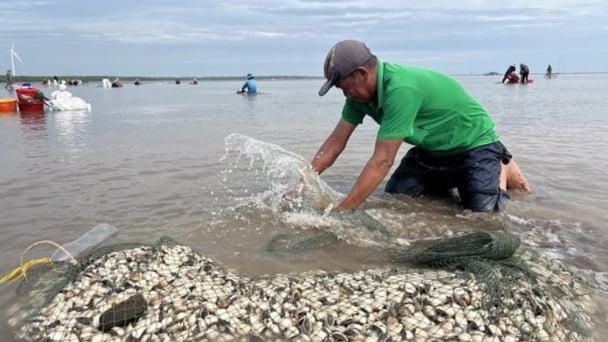
(VAN) Vietnam is intensifying the development of mollusk farming areas that meet international standards, aiming for sustainable growth and enhancing its export position in the global seafood market.
![Advanced mariculture – an inevitable trend: [3] Policy-driven momentum](https://t.ex-cdn.com/nongnghiepmoitruong.vn/608w/files/doanhtq/2025/05/21/0104-0616-0348-nuoi-bien-170339_789.jpg)
(VAN) To ensure the success of offshore mariculture that uses advanced technologies, it is essential to establish supportive policies that inspire both individuals and enterprises to invest with confidence.
![Advanced mariculture – an inevitable trend: [2] Outstanding results](https://t.ex-cdn.com/nongnghiepmoitruong.vn/608w/files/sohk/2025/05/12/4632-4136-nuoi-bien-11-164117_819.jpg)
(VAN) Pilot models of high-tech offshore mariculture in Vietnam, particularly in the South Central Coast region, have demonstrated exceptional economic returns and sustainability, setting a new direction for the country’s aquaculture industry.
![Advanced mariculture – an inevitable trend: [1] Moving offshore](https://t.ex-cdn.com/nongnghiepmoitruong.vn/608w/files/phucpm/2025/05/18/0252-2436-nuoi-bien-6-162148_783.jpg)
(VAN) Mariculture using advanced technology and moving offshore is an inevitable trend, as nearshore areas increasingly reveal limitations.
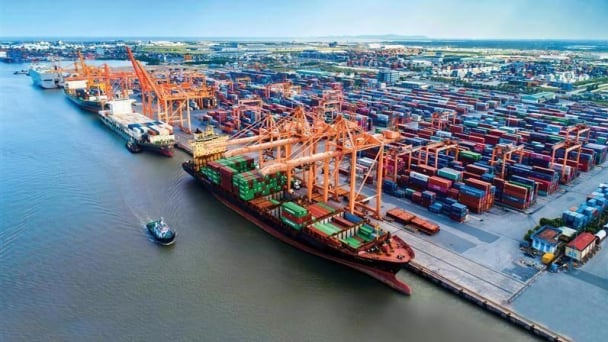
(VAN) South Korea is currently the second-largest investor in Hai Phong in terms of the number of projects (186 projects) and the largest in terms of total registered investment capital, reaching USD 14.2 billion.
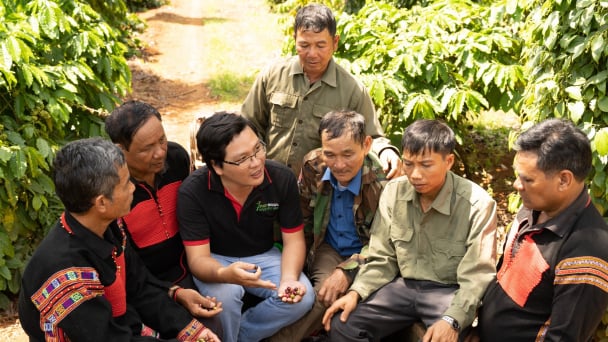
(VAN) As consumers become more environmentally conscious, legal regulations grow increasingly stringent...